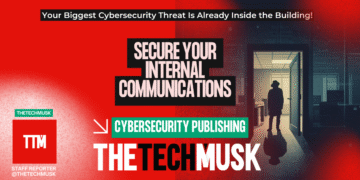Securing your AWS environment is crucial in safeguarding sensitive data and ensuring the smooth operation of your applications and services. Amazon Web Services (AWS) provides a robust cloud platform, and taking proactive steps to enhance security is paramount. In this guide, we will explore five essential steps to fortify your AWS environment and bolster overall security.
1. Establish a Strong Identity Foundation with AWS IAM:
Creating a robust identity and access management foundation is the first step in securing your AWS environment. AWS Identity and Access Management (IAM) enables you to define and manage user permissions effectively. By adhering to the principle of least privilege, you ensure that only authorized individuals have access to specific AWS resources, reducing the risk of unauthorized activities.
2. Implement Multi-Factor Authentication (MFA):
Strengthening authentication mechanisms is key to preventing unauthorized access. AWS offers Multi-Factor Authentication (MFA) as an additional layer of security for user accounts. Enabling MFA requires users to provide a second form of verification, such as a temporary code from a mobile app or a hardware token. This simple step significantly enhances the security of your AWS environment.
3. Secure Data in Transit and at Rest with Encryption:
Protecting data is a critical aspect of AWS security. Implementing encryption for data in transit and at rest ensures that sensitive information remains confidential. Leverage AWS Key Management Service (KMS) to manage encryption keys, and use Secure Sockets Layer (SSL)/Transport Layer Security (TLS) protocols for data in transit. Encrypting data adds a robust layer of protection against potential security threats.
4. Regularly Monitor and Audit Your AWS Environment:
Proactive monitoring and auditing are essential for identifying potential security issues in your AWS environment. Utilize AWS CloudWatch to monitor performance metrics, set up alerts, and gain insights into your resources’ behavior. Additionally, AWS CloudTrail provides detailed logs of AWS API calls, enabling you to track user activity, investigate security incidents, and maintain compliance with regulatory requirements.
5. Implement Network Security with AWS VPC and Security Groups:
Configuring network security is fundamental to protecting your AWS environment. Utilize AWS Virtual Private Cloud (VPC) to create isolated network environments, and define security groups to control inbound and outbound traffic. By applying the principle of least privilege to network configurations, you can minimize potential attack vectors and enhance the overall security posture of your AWS environment.
Securing your AWS environment is an ongoing process that requires a proactive and multifaceted approach. By implementing these five important steps—establishing a strong identity foundation, implementing MFA, encrypting data, monitoring and auditing, and configuring network security—you can create a robust security framework for your AWS environment. Keep in mind, AWS security is a shared responsibility, and adopting these measures ensures a safer and more resilient cloud infrastructure. By staying vigilant and adhering to best practices, you can confidently navigate the AWS landscape and protect your valuable resources and data.
























